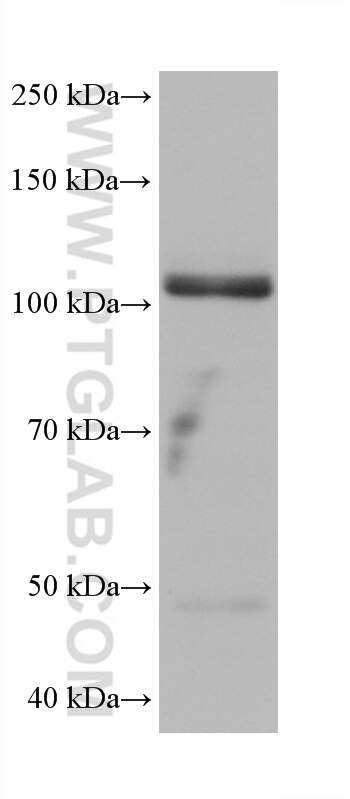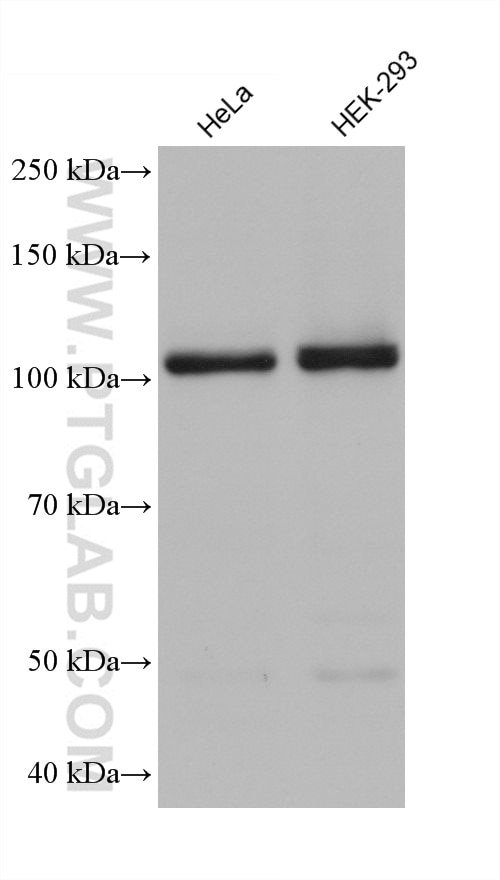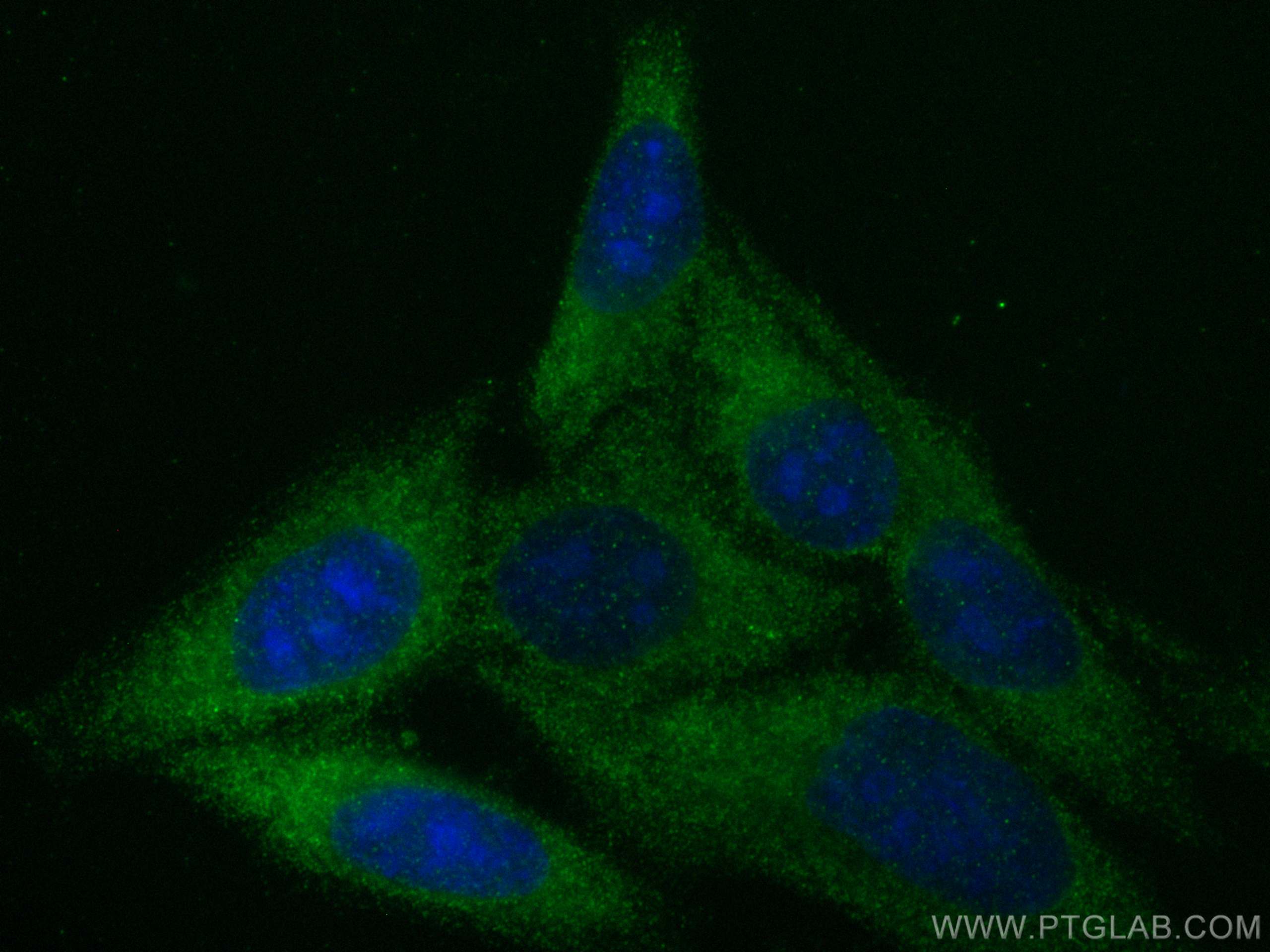Tested Applications
| Positive WB detected in | HeLa cells, U2OS cells, HEK-239 cells |
| Positive IF/ICC detected in | HepG2 cells |
Recommended dilution
| Application | Dilution |
|---|---|
| Western Blot (WB) | WB : 1:2000-1:10000 |
| Immunofluorescence (IF)/ICC | IF/ICC : 1:200-1:800 |
| It is recommended that this reagent should be titrated in each testing system to obtain optimal results. | |
| Sample-dependent, Check data in validation data gallery. | |
Product Information
68323-1-Ig targets LRRC8C in WB, IF/ICC, ELISA applications and shows reactivity with Human samples.
| Tested Reactivity | Human |
| Host / Isotype | Mouse / IgG2b |
| Class | Monoclonal |
| Type | Antibody |
| Immunogen |
CatNo: Ag17001 Product name: Recombinant human LRRC8C protein Source: e coli.-derived, PET28a Tag: 6*His Domain: 618-803 aa of BC113973 Sequence: DLKENNLKSIEEIVSFQHLRKLTVLKLWHNSITYIPEHIKKLTSLERLSFSHNKIEVLPSHLFLCNKIRYLDLSYNDIRFIPPEIGVLQSLQYFSITCNKVESLPDELYFCKKLKTLKIGKNSLSVLSPKIGNLLFLSYLDVKGNHFEILPPELGDCRALKRAGLVVEDALFETLPSDVREQMKTE Predict reactive species |
| Full Name | leucine rich repeat containing 8 family, member C |
| Calculated Molecular Weight | 803 aa, 92 kDa |
| Observed Molecular Weight | 105 kDa |
| GenBank Accession Number | BC113973 |
| Gene Symbol | LRRC8C |
| Gene ID (NCBI) | 84230 |
| RRID | AB_2935395 |
| Conjugate | Unconjugated |
| Form | Liquid |
| Purification Method | Protein A purification |
| UNIPROT ID | Q8TDW0 |
| Storage Buffer | PBS with 0.02% sodium azide and 50% glycerol, pH 7.3. |
| Storage Conditions | Store at -20°C. Stable for one year after shipment. Aliquoting is unnecessary for -20oC storage. 20ul sizes contain 0.1% BSA. |
Background Information
LRRC8C (Leucine-rich repeat-containing protein 8C), also known as AD158, is a non-essential component of the volume-regulated anion channel (VRAC, also known as VSOAC channel), which is required to maintain a constant cell volume in response to extracellular or intracellular permeability changes. The VRAC channel conducts iodide better than chloride and can also conduct organic osmolytes like taurine. The VRAC channel also mediates transport of immunoreactive cyclic dinucleotide GMP-AMP (2'-3'-cGAMP), an immune messenger produced in response to DNA virus in the cytosol (PMID:24790029; 26824658; 28193731).
Protocols
| Product Specific Protocols | |
|---|---|
| IF protocol for LRRC8C antibody 68323-1-Ig | Download protocol |
| WB protocol for LRRC8C antibody 68323-1-Ig | Download protocol |
| Standard Protocols | |
|---|---|
| Click here to view our Standard Protocols |








